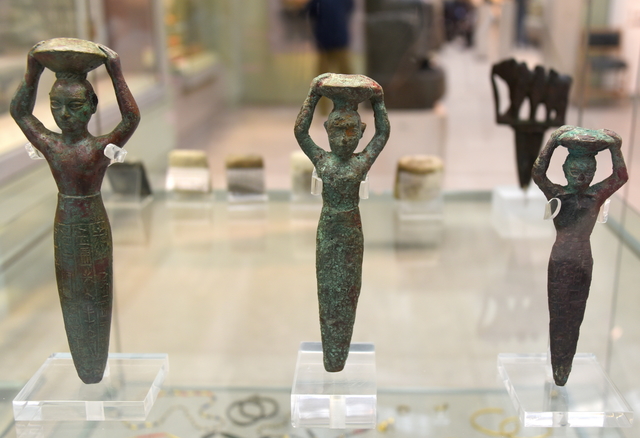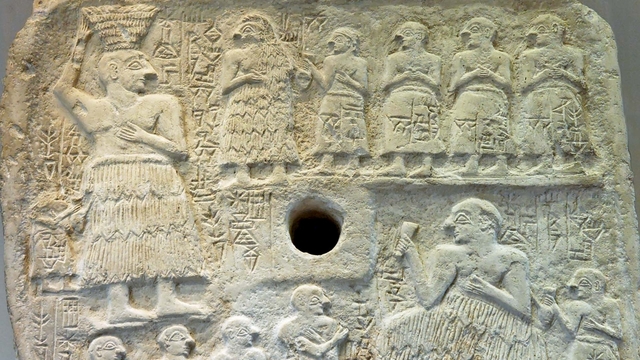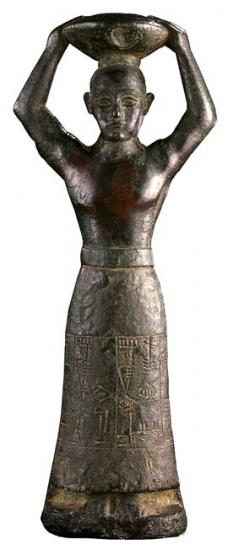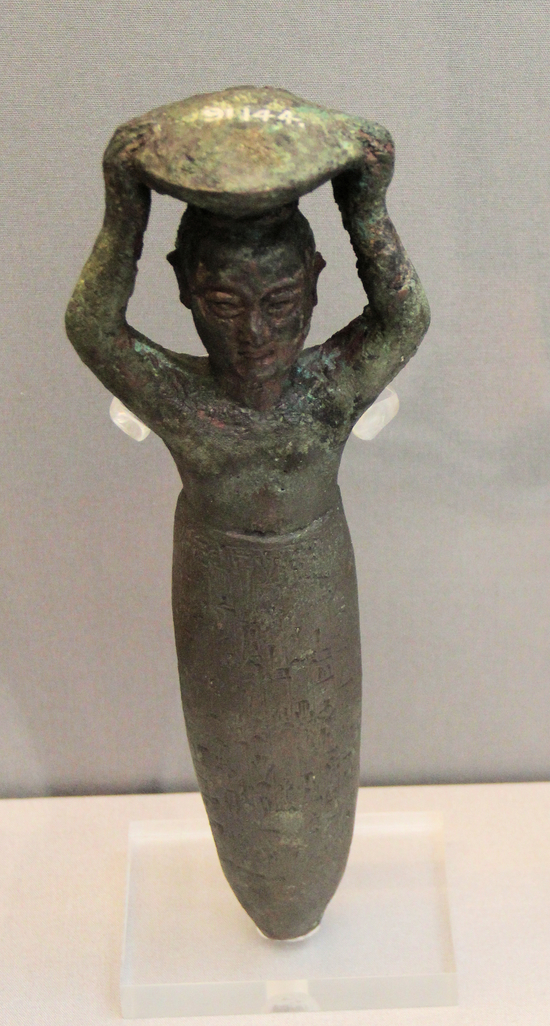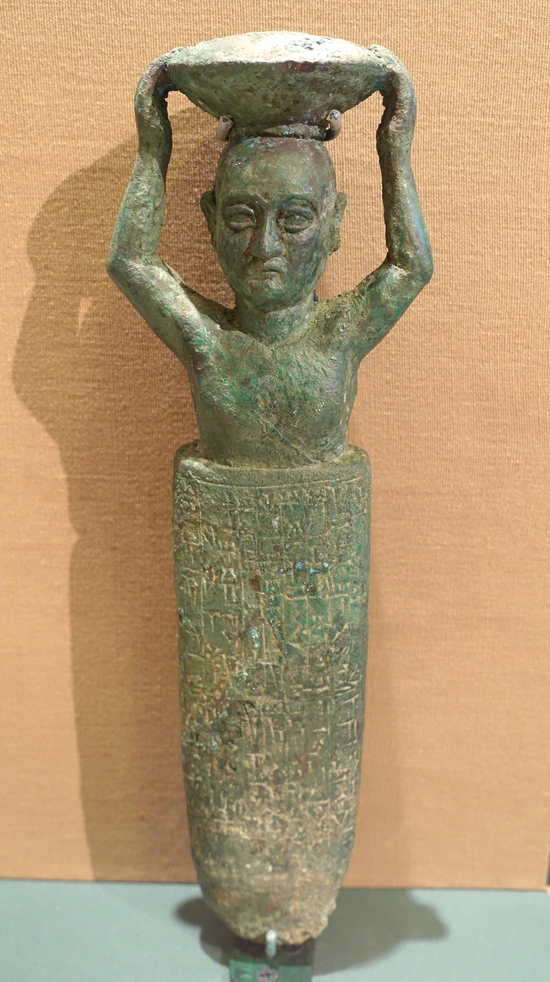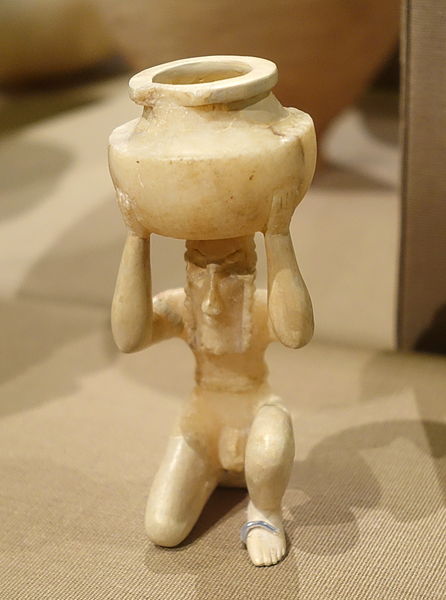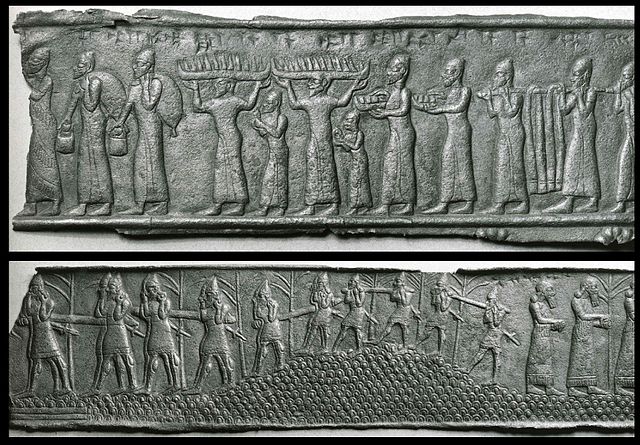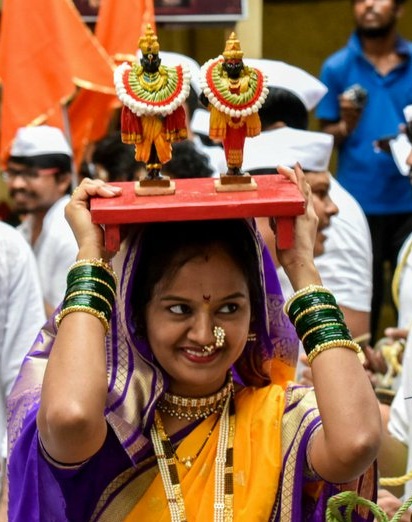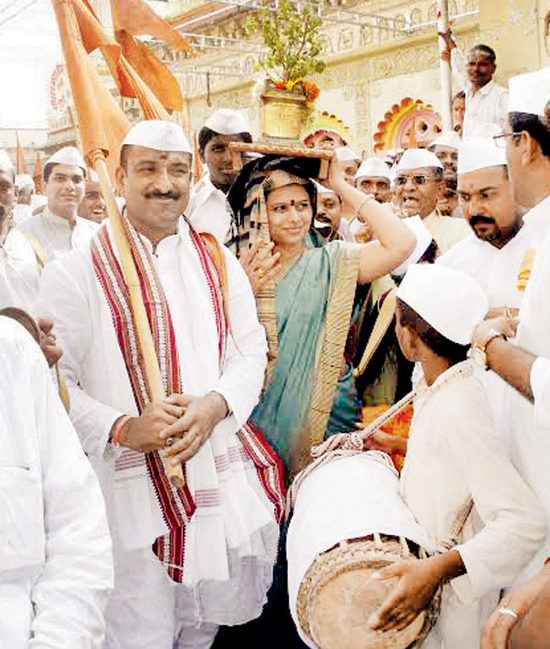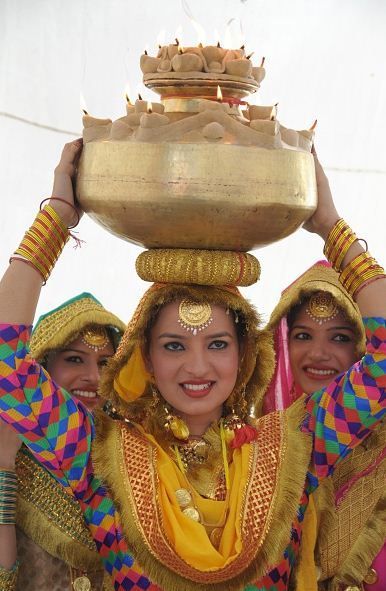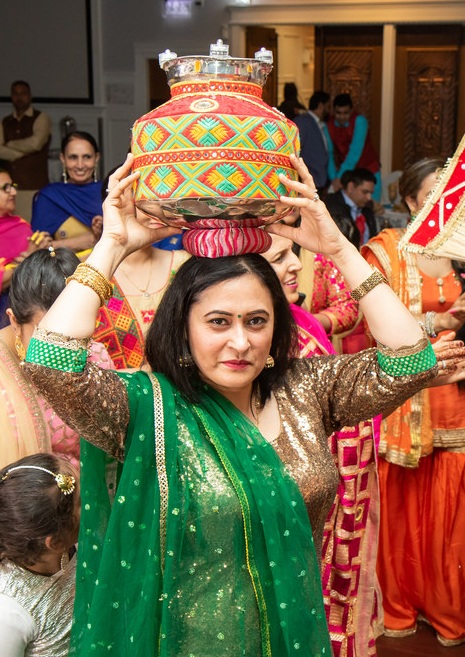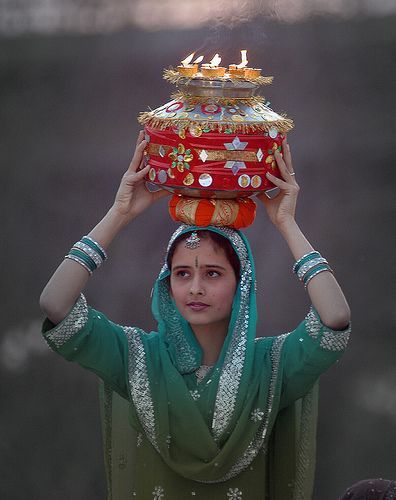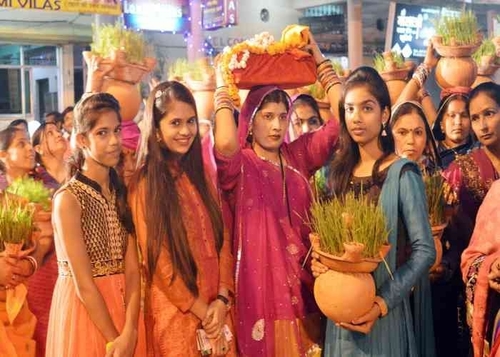
| CARRYING RELIGIOUS ITEMS ON HEAD Mostly people in India think that knowledge flowed from East to West which is not true. When Aryans migrated towards India from West they brought their culture and traditions with them.
Carrying religious items on head as a sign of utmost respect has been a part of Aryan culture which we can see in Sumerian Aryans and Vedic Aryans.
In India (Bharat / Aryavrat (land of aryans)) mostly Vedic Aryan culture is women oriented and starting of any auspicious work is done by women.
When Aryans migrated towards India they kept their culture and traditions. Just as Sumerian Aryans carried foundation of temple on head Vedic Aryans living in India also kept religious objects such as temple foundation stone, Tulsi / Holy basil, (Ocimum tenuiflorum), religious pots, statue of gods, etc. during festivals and ceremony.
Keeping the topic short and to the point I am putting few images below to prove my point.
1. Sumer :
Certain types of figurines were commonly placed within foundations of buildings during the third dynasty of Ur (2100-2000 BCE) of the Neo-Sumerian Period, to commemorate the building of temples by the ruler. These three peg-shaped copper alloy figurines represent kings. Each figure carries a basket on his head and there are lines of cuneiform inscription on the body. Usually, such figures were buried with foundation stone tablets describing the building process. These three figurines are displayed within one case at the British Museum. From left to right :
From Southern Mesopotamia, modern-day Iraq. (The British Museum, London).
Relief of Ur-Nanshe. At the top he creates the foundation for a shrine, at the bottom he presides over the dedication (Louvre)
Foundation Figure of King Ur-Namma Description
:
King of Larsa Warad-Sin Foundation Figurine for Inanna, found at Zabalam
King of Larsa Rim-Sin 1 Brother of Warad-Sin Foundation Figurine
Kneeling Nude Male Holding Vase on Head, Tell Agrab, Shara Temple, Early Dynastic period, 2900 - 2700 BC, calcite - Oriental Institute Museum, University of Chicago - DSC07462
The Walters Art Museum fragments of the Balawat Gates. (Top) Syrian porters in long robes and conical hats carry tribute to the Assyrian camp. (Bottom) Assyrian soldiers carry logs as they march through a hilly, forested landscape 2. Vedic Aryan culture in India :
Devotees participate in the procession during Girgaon Varkari Sampraday Dindi Palkhi Sohla. The Varkaris believe that Lord Vitthal awaits them at the end of this walk, and see the journey itself as the reward
Annual pilgrimage or Wari to the Vitthal temple in Pandharpur, Pune
Ceremony in Punjab, India
Gharoli Ceremony
Ceremony in Punjab, India
Jaya Parvati Vrat |
